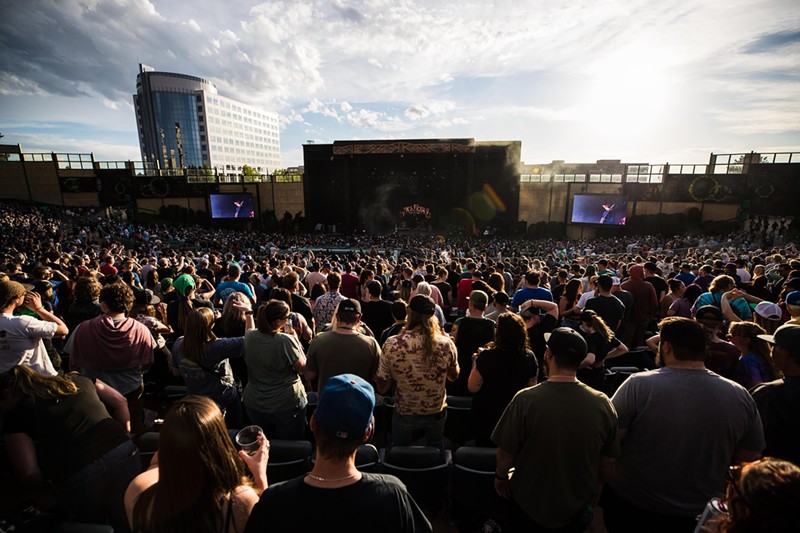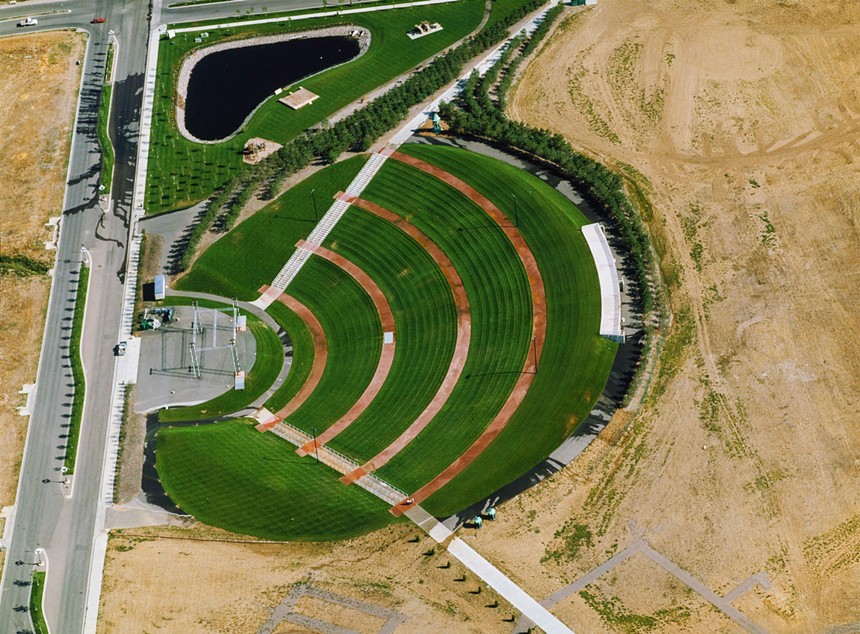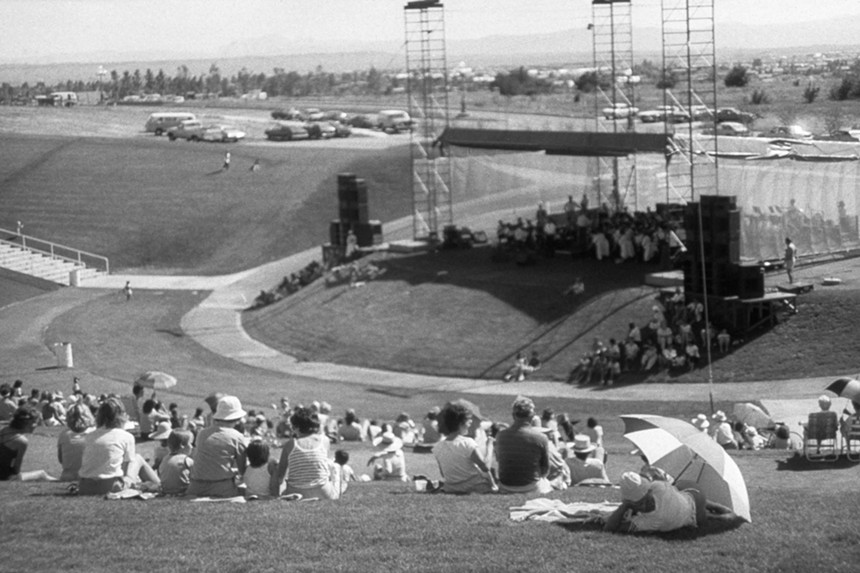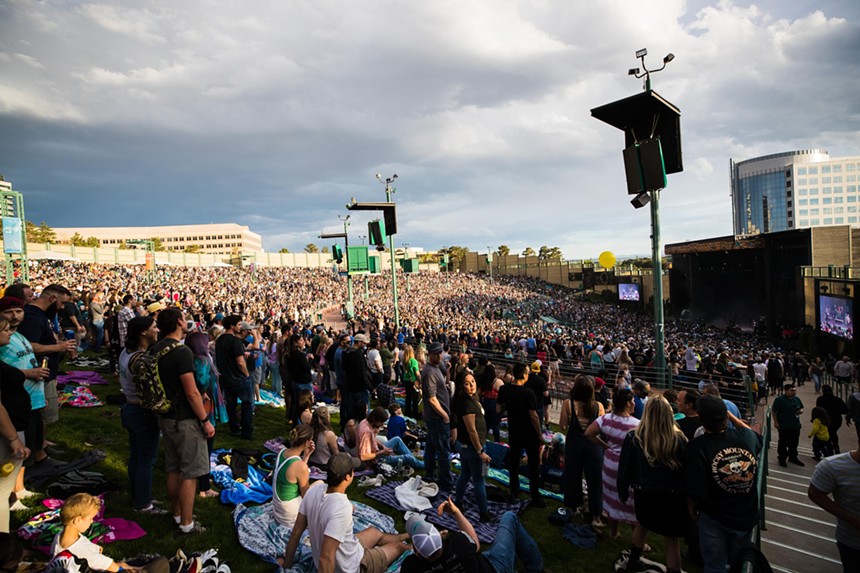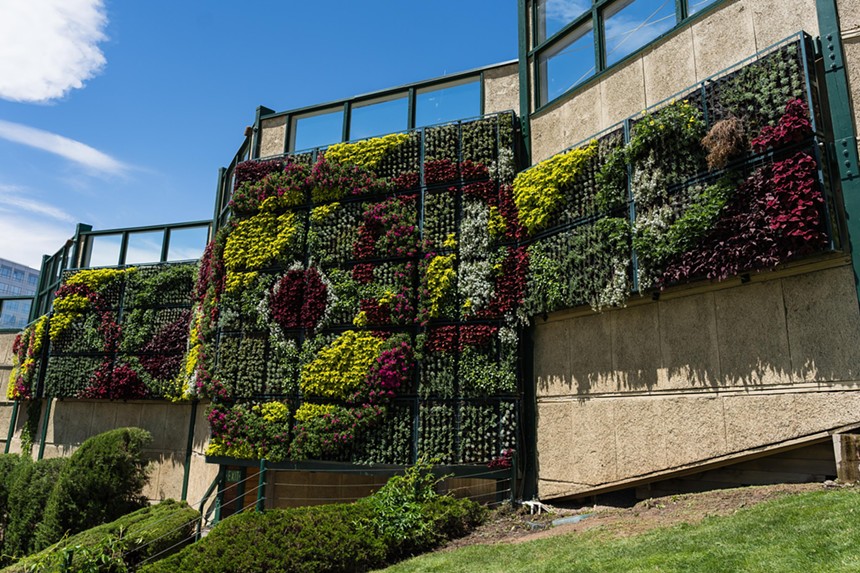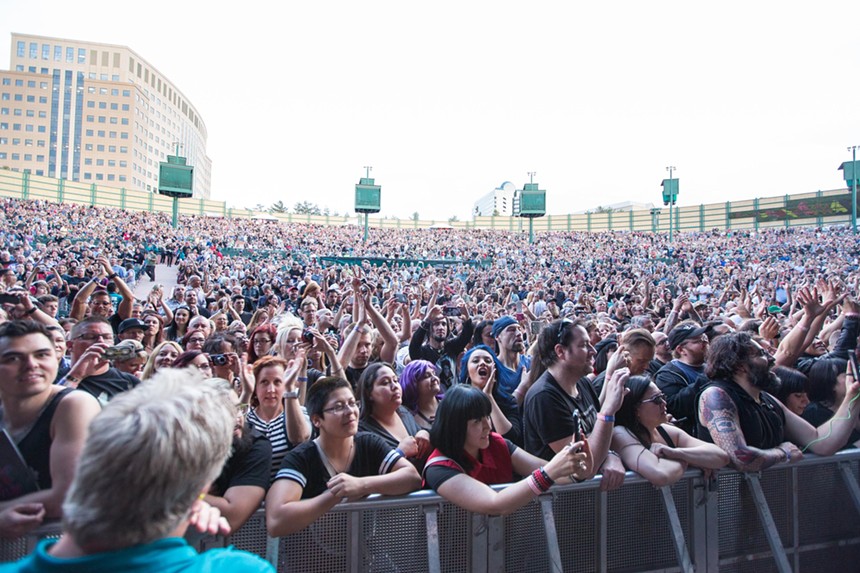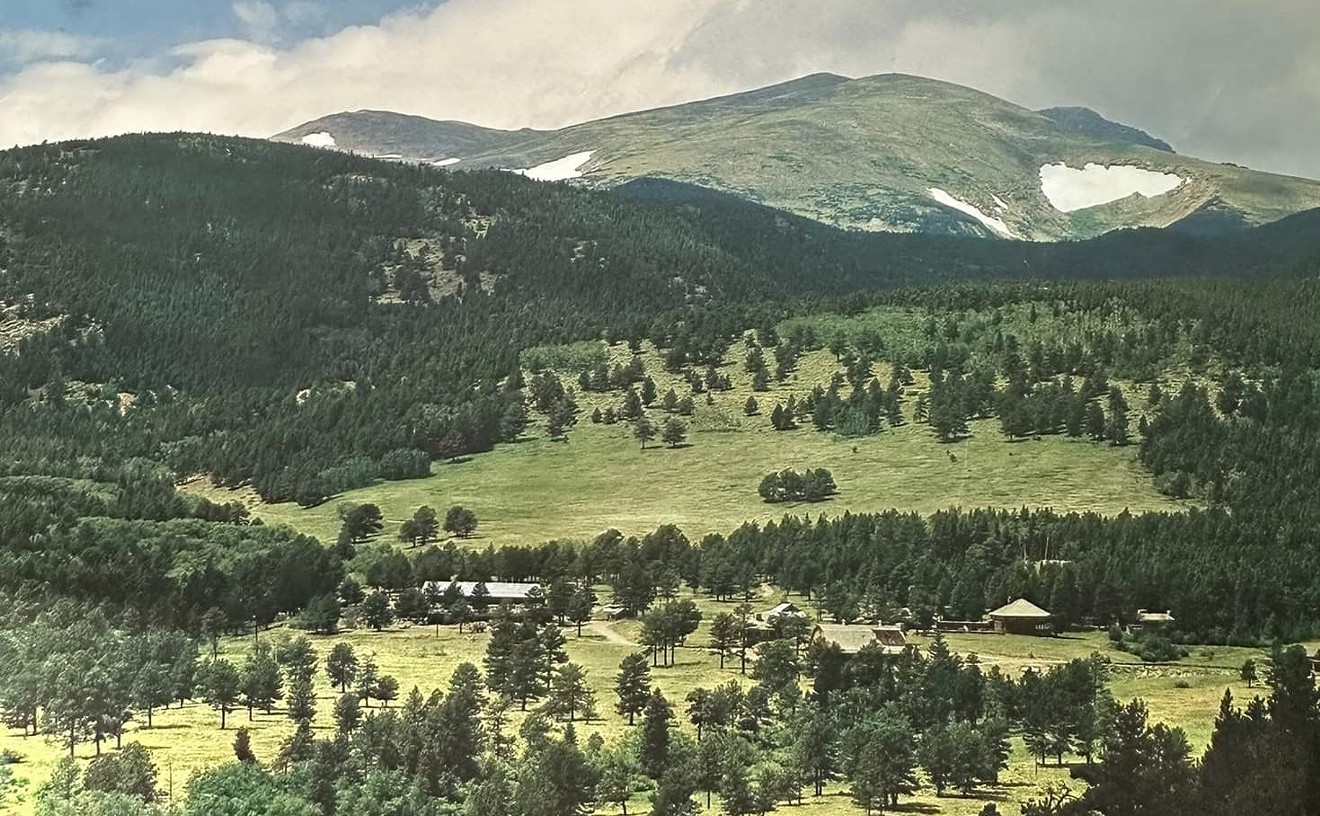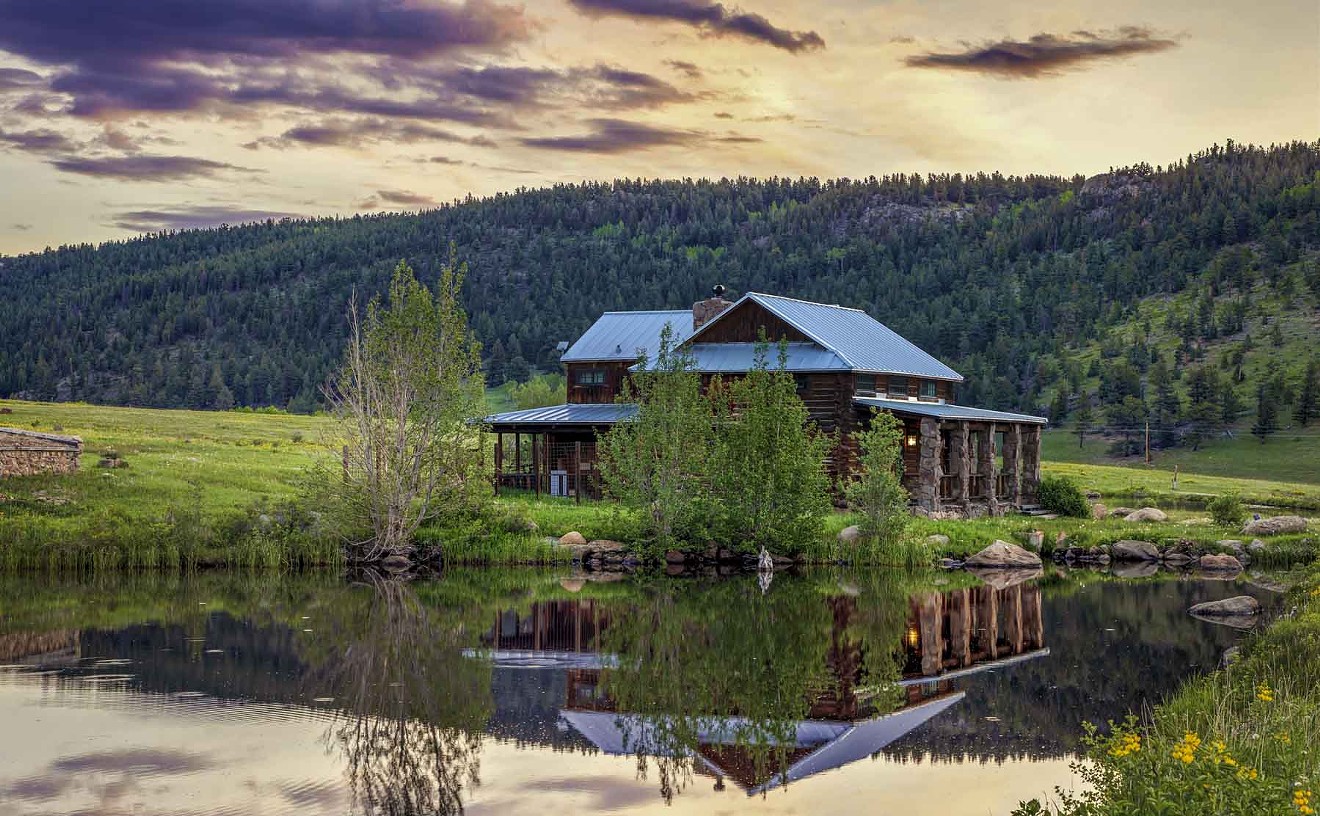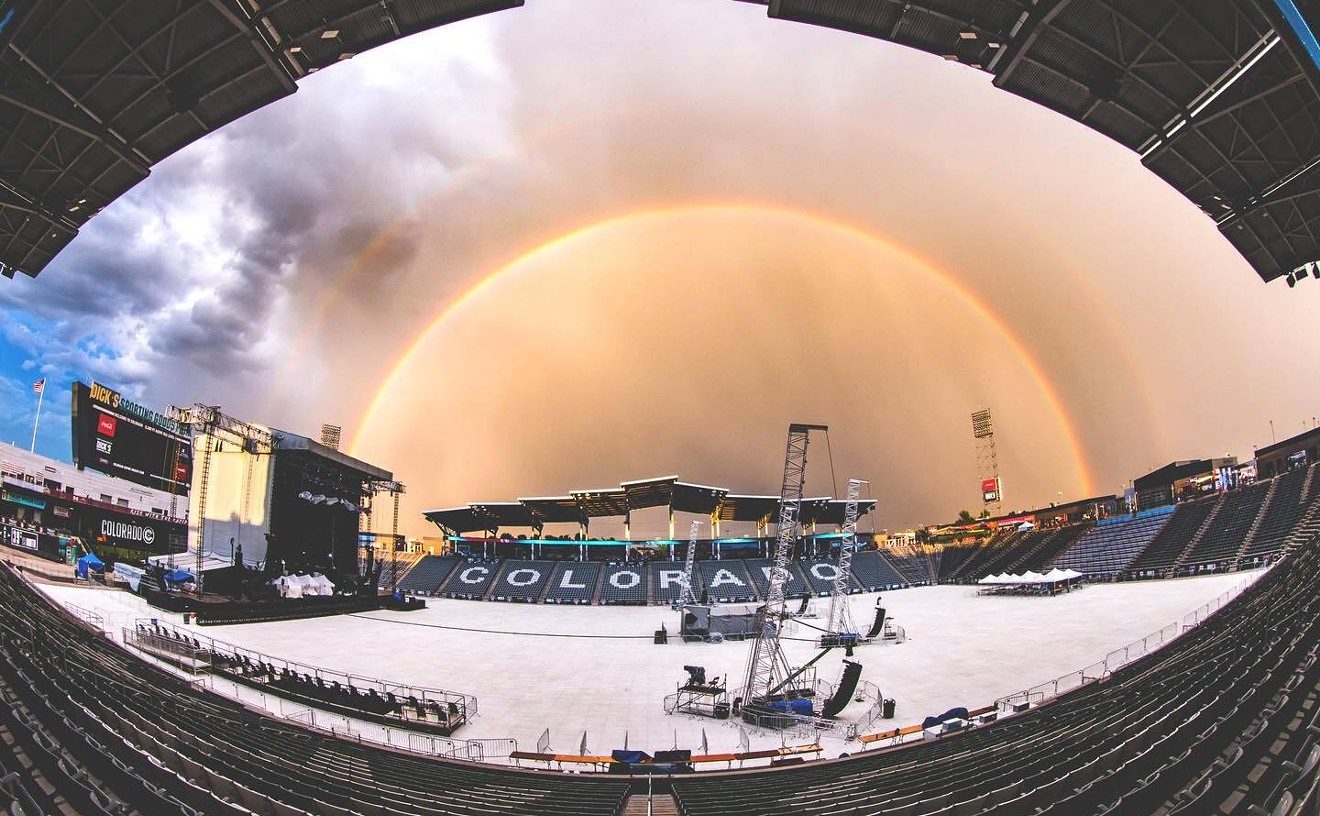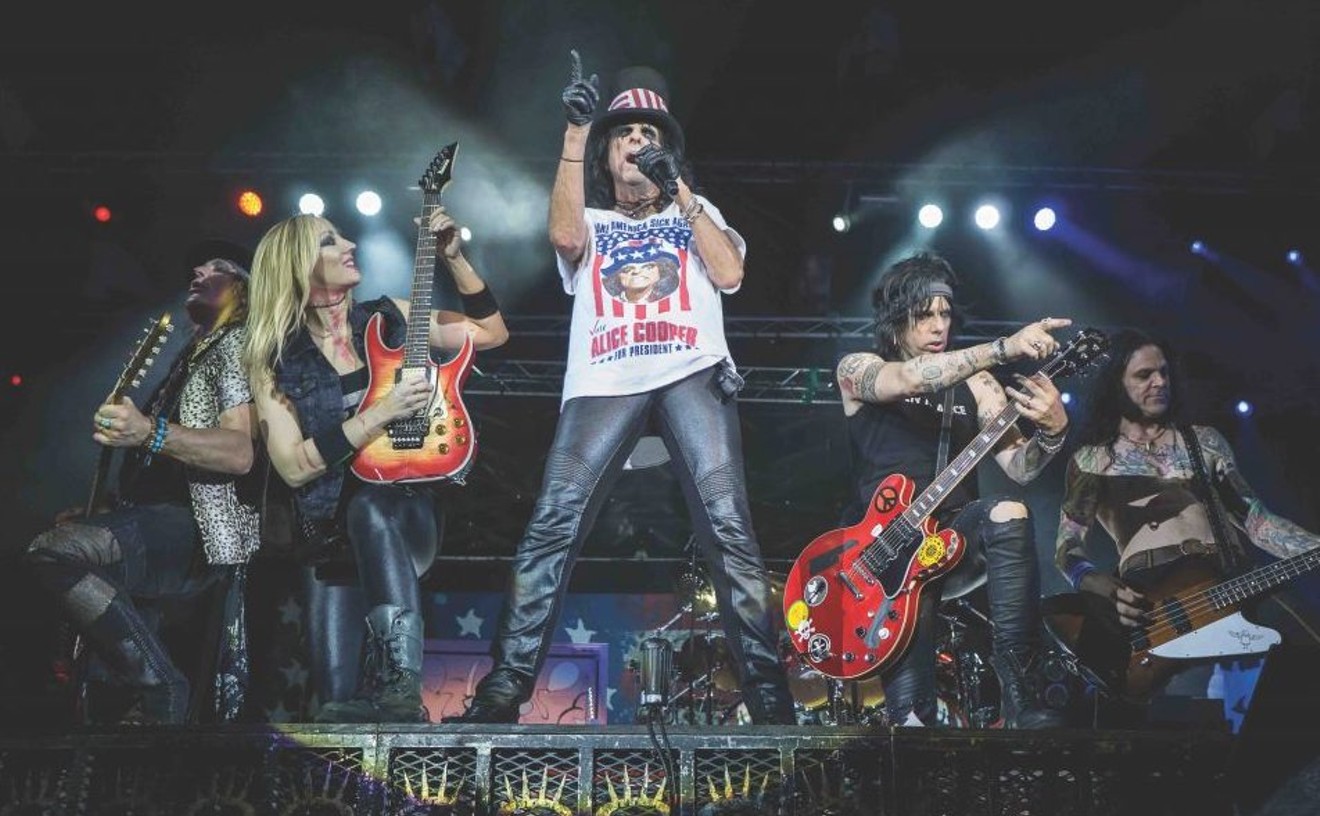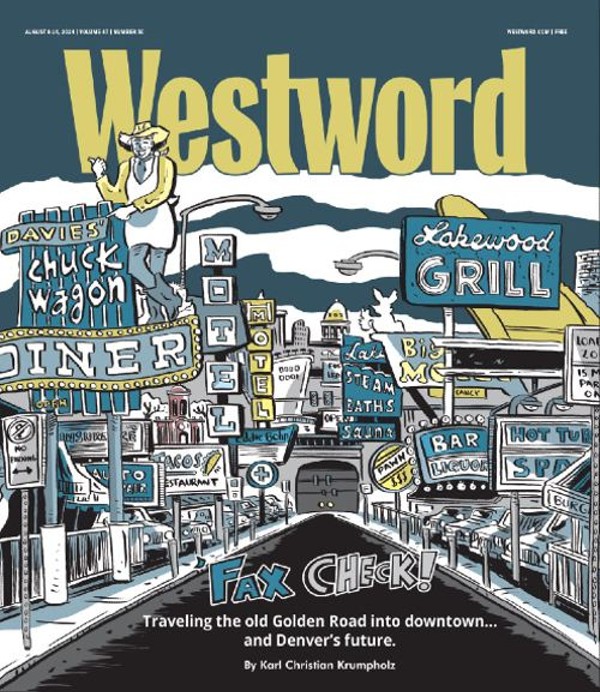On June 11, 1988, legendary rock musician Dan Fogelberg took the stage at the newly opened Fiddler's Green Amphitheatre, captivating a massive audience with the soulful tunes of his opening song, "Nexus."
There had been genuine concerns that this moment wouldn't happen — or, at the very least, that it would have been significantly wetter. Add this to the growing list of things that never change: Colorado's weather had been wildly unpredictable in the weeks leading up to the concert, with multiple tornadoes touching down in the Denver area and an intense thunderstorm that afternoon.
But by the time most attendees arrived at the venue, the rain had stopped and the show went on. Reviewers of Fogelberg's show praised the new venue's scenery, sound and layout, with one stating that they were "impressed with this new challenge to Red Rocks."
Fogelberg's performance marked the beginning of what would become Denver's largest outdoor amphitheater, which has combined music, art and nature for the past three decades. Located in Greenwood Village near the Denver Tech Center, Fiddler's Green was originally created as a large-scale earth sculpture that also served as a performing arts space.
In 1982, the Museum of Outdoor Arts commissioned the renowned landscape architect George Hargreaves to design the venue. The amphitheater's design won national recognition, including an American Institute of Architects award in 1983.
Fiddler's was founded by John W. Madden Jr., a longtime Colorado businessman who passed away in January; his wife, Marjorie P. Madden; and his daughter and MOA director, Cynthia Madden Leitner. Their goal for the venue was to host community festivals and symphonic music concerts on its rolling, grassy slopes.
"Back when it was in development, the space was basically a field," Madden Leitner recalls. "My dad was really into music, and he wanted to build an amphitheater that would accommodate the Denver Symphony in the summertime and do a few community events. What was built was Fiddler's Green as we know it today, but it had no walls. There was no stage house — only an asphalt path leading to the venue — but it was, and still is, breathtakingly beautiful."
It quickly became clear that the venue had the potential for much more than the small-scale events it was originally created for. MOA signed a lease with MCA Records in 1986, resulting in a series of renovations that transformed the amphitheater into a premier concert venue that officially opened with Fogelberg's show in 1988.
Following its grand opening, the venue's large capacity of roughly 17,000 (which includes both ticketed and general admission lawn seating) and scenic location built its reputation. Over the next few decades, Fiddler's Green hosted a wide range of performances, from classical symphonies to rock and pop concerts, including shows by Tom Petty and the Heartbreakers, Sting, the Spice Girls, Steely Dan and Tina Turner.
In March 2004, the amphitheater was temporarily renamed Coors Amphitheatre after a sponsorship agreement with Coors Brewing Company. The name reverted to Fiddler's Green in 2009, when the sponsorship agreement ended, but starting in February 2010, the venue was briefly known as Comfort Dental Amphitheatre under a new sponsorship deal. That controversial name change lasted until January 2013, after which the venue reclaimed its original name.
"Everything changed for us after we started leasing the space," Madden Leitner admits. "After MCA, the original 25-year lease was transferred over to Universal, the House of Blues and then Live Nation, so there were four other promotion companies that utilized the facility before Anschutz Entertainment Group. We’re now about ten years into the lease that I negotiated with AEG."
In October 2013, the venue's operations contract with Live Nation expired, and MOA decided not to renew its contract. After several months of discussion, the museum decided to sign a fifteen-year operations agreement with AEG Presents, the nation's second-largest concert promotion company, which promised to invest $5 million in facility renovations and support the return of more community-organized events to the space.
Under AEG's management, Fiddler's Green received what Madden Leitner describes as "a major facelift." The renovations included new seating, paint, upgraded lighting and sound systems and an increase to the general admission section.
"At Fiddler’s, we are always observing the flow of the venue and trying to find better ways to smooth operations," says Errin Kava, the venue's general manager on behalf of AEG. "We do our best to keep people moving efficiently in and out of the amphitheater, as well as making sure that if patrons choose to use the amenities during a set break, they can get what they need and get back to their seats without missing the artist's set."
Weather is one of the unique logistical challenges. "All shows are rain or shine; however, if we start to see lightning, hail or high winds, for example, we need to clear the venue and guide patrons to a safe area," Kava says. "Sometimes that’s tough, because no one really wants to leave or give up their spots they showed up early for."
One thing that sets Fiddler's Green apart from other local music venues is its business model. Revenue generated from the amphitheater goes back into the community, funding art installations, educational programs and other community initiatives.
"The money from Fiddler’s Green has been used over the years to buy art, refurbish Marjorie Park, which is adjacent to Fiddler’s Green, and fund other museum expansions," Madden Leitner says. "All of our programming is colored by the fact that we are a nonprofit. Most facilities are owned by the City of Denver, private individuals or corporations. It is not that our museum does not want to make money from the facility, but we have different priorities than other venues, and because we are an arts organization, we can use the space for a variety of art forms."
Marjorie Park is home to more than forty outdoor sculptures, including the famous bronze series of Alice in Wonderland sculptures by artist Harry Marinsky. Fiddler's Green has its own vibrant mural program, too, and the stunning Living Wall, an ever-changing vertical garden along the sound walls comprising live plants.
With more than 200,000 visitors annually, the amphitheater remains a popular destination for music enthusiasts. As Fiddler's Green celebrates its 36th season, the 2024 lineup showcases a diverse range of artists, including two sold-out performances by Billy Strings in May and highly anticipated shows by Noah Kahan, Sam Hunt, the Dave Matthews Band, Creed, Pentatonix, Kacey Musgraves and KORN throughout the summer.
"We really run the gamut in terms of artists," Madden Leitner says. "We started with community events, but now we do all kinds of concerts. We were initially criticized for bringing people like Snoop Dogg in, but Snoop Dogg appeals to a large percentage of the population. The arts are a universal language, so we don’t want to be judgmental of different kinds and qualities of music, so the facility is always open and shows every kind of music genre you can imagine. We are quite proud of that, and we've had every kind of crowd you can imagine — that's kind of a mantra for us."
Thanks to the continued support of MOA and AEG, the amphitheater is poised to entertain audiences for many years. "The entertainment industry has changed so much, and we've experienced some highs and lows in the past forty years, but it’s reignited now," Madden Leitner says. "I know this is philosophical, but I believe now more than ever we need the arts. Art is valuable in business and should be incorporated into all aspects. I believe we are seeing more and more of this, which excites me.
"When we first started, people were not doing beautiful video presentations to accompany their music; they were not giving the audience an immersive experience," she continues. "I think we’ll see more experiential approaches as we move forward. The Sphere in Las Vegas is really the ultimate venue; it's really raised the bar in terms of audience experience. I believe that part of our future will be figuring out how to make every aspect of our experience immersive so that we can continue to provide transformative experiences for all audience members at Fiddler's Green for years to come."
Learn more about Fiddler's Green Amphitheatre and find upcoming shows at fiddlersgreenamp.com.

Audio By Carbonatix
[
{
"name": "Air - MediumRectangle - Inline Content - Mobile Display Size",
"component": "12017618",
"insertPoint": "2",
"requiredCountToDisplay": "2",
"watchElement": ".fdn-content-body",
"astAdList": [
{
"adType": "rectangle",
"displayTargets": "mobile"
}
]
},{
"name": "Editor Picks",
"component": "17242653",
"insertPoint": "4",
"requiredCountToDisplay": "1",
"watchElement": ".fdn-content-body",
"astAdList": [
{
"adType": "rectangle",
"displayTargets": "desktop|tablet"
},{
"adType": "rectangle",
"displayTargets": "desktop|tablet|mobile"
}
]
},{
"name": "Inline Links",
"component": "18838239",
"insertPoint": "8th",
"startingPoint": 8,
"requiredCountToDisplay": "7",
"maxInsertions": 25
},{
"name": "Air - MediumRectangle - Combo - Inline Content",
"component": "17261320",
"insertPoint": "8th",
"startingPoint": 8,
"requiredCountToDisplay": "7",
"maxInsertions": 25,
"watchElement": ".fdn-content-body",
"astAdList": [
{
"adType": "rectangle",
"displayTargets": "desktop|tablet"
},{
"adType": "rectangle",
"displayTargets": "desktop|tablet|mobile"
}
]
},{
"name": "Inline Links",
"component": "18838239",
"insertPoint": "8th",
"startingPoint": 12,
"requiredCountToDisplay": "11",
"maxInsertions": 25
},{
"name": "Air - Leaderboard Tower - Combo - Inline Content",
"component": "17261321",
"insertPoint": "8th",
"startingPoint": 12,
"requiredCountToDisplay": "11",
"maxInsertions": 25,
"watchElement": ".fdn-content-body",
"astAdList": [
{
"adType": "leaderboardInlineContent",
"displayTargets": "desktop|tablet"
},{
"adType": "tower",
"displayTargets": "mobile"
}
]
}
]

